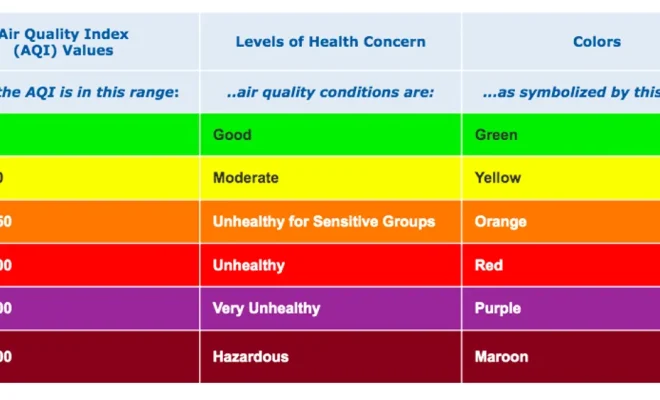Air Quality Index: The Weather Alert Meaning and How to Stay Safe

Air quality index (AQI) might be a less familiar term, though it plays a pivotal role in our health just like the temperature or rainfall. Originated in the United States, AQI is a universally accepted barometer that gauges air pollution. The index measures five major pollutants regulated by the Clean Air Act: ground-level ozone, particle pollution (also known as particulate matter), carbon monoxide, sulfur dioxide, and nitrogen dioxide. In essence, AQI lets citizens know when air quality is good, bad, or somewhere in between — and how that might affect their health.
Understanding the AQI Scale
The AQI ranges from 0 to 500, where a higher AQI revolves around higher levels of air pollution and within that, poses a greater risk to health. To simplify understanding, the AQI is divided into six categories each associated with a particular color. Green indicates “Good” air quality denoted by a scale of (0-50). Incrementally it moves further with Yellow indicating “Moderate” (51-100), Orange depicting “Unhealthy for Sensitive Groups” (101-150), Red pointing at “Unhealthy” (151-200), Purple narrating “Very Unhealthy” (201-300) and Maroon indicating at “Hazardous” (301-500).
Staying Safe During Poor Air Quality
Our health can be majorly affected by long or intense exposure to poor air quality. People with pre-existing cardiovascular or lung diseases like asthma are at an increased risk during elevated AQI levels. Likewise, elder adults, children and people who are active outdoors for labour/workout need to be more careful.
To ensure one’s safety during poorer air quality days some protective measures can be adopted:
1. Staying Indoors: Restrict outdoor activities or limit them to times when the AQI level is low.
2. Using Air Purifiers: Use air purifiers to ensure indoor air remains clean.
3. Wearing Protective Gear: Wearing N95 masks can filter out harmful airborne particles.
Monitoring the Air Quality
Checking forecasts can give alerts on high pollution days which facilities pre-planning of activities. Websites like AIRNow provide real-time data and forecasts on AQI levels.
In conclusion, Awareness of AQI is equally significant as knowing about temperature or precipitation rates. It elicits the need for preventive actions against potentially harmful pollutants prevalent in our surroundings keeping us protected from adverse health issues arising from them.
Therefore an understanding of AQI forms an integral part in taking control of personal health and well-being particularly in today’s era where global industrial growth has seen rocketing levels of aeonian pollutants. Acknowledging this index helps us navigate through our lives more safely by aiding us make informed choices about outdoor activities in accord with key environmental conditions at large.





